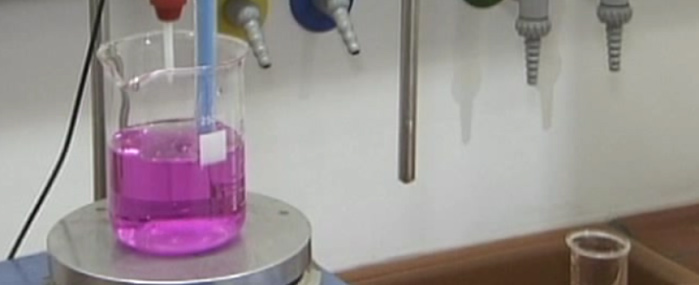
Direct Links:
Centrifugation
Suspended particles sink to the ground because of gravity - a centrifuge can be used to speed up this process. Once the particles have sedimented, the clear solution can be decanted.
In a regular laboratory there are two types of centrifuges, they can be driven by an electric motor or be spun by hand. Those who are spun by hand have smaller numbers of rotation, but can be sufficient for daily use. The motor-driven centrifuge spins with up to 6000 min-1 and can therefore be used to separate fine solutions.
Both types have multiple slots which can be equipped with centrifuge tubes. The tubes have to be placed on opposing slots and have to be filled with the same amount of suspension in order to prevent unbalance from damaging the centrifuge.
If the tubes are set correctly, the centrifuge can be accelerated using the hand crank and afterwards be stopped by placing a finger on the axis of rotation. After the centrifugation the particles have sedimented on the bottom of the tube and the solution is clear.
The motor-driven centrifuge is demonstrated by separating a blood sample. The blood is divided into two tubes, which are placed in opposing slots. After closing the cover, the number of rotations and time is set and the centrifuge is enabled. Once the process is finished, the cover can be lifted using the button. The red blood cells have sedimented from the clear plasma, which can be pipetted off.